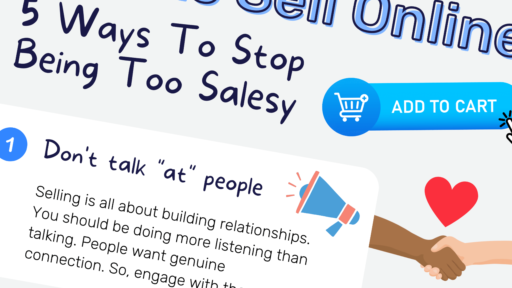Content marketing is important for all industries. It can help you establish your brand, reach new customers, and encourage effective word-of-mouth marketing.
But depending on the industry you’re in, your content marketing strategy might fall outside the norm.
Take the Software as a Service (SaaS) sector, for instance. SaaS companies have to take a very specific approach when creating and distributing content. Because of the business model, there’s a big focus on reducing churn rates, not just boosting customer acquisition.
If you’re trying to develop a content marketing strategy for a SaaS product, you need to understand how to go about it to enhance your odds of success.
That’s why we’ve developed this informative guide.
In this article, you’ll learn all about how to optimize your content for SaaS marketing.
What’s different about SaaS marketing for content?
SaaS content focuses on Search Engine Optimization (or SEO for short). SEO is a series of content tweaks both on and off a page that make your content more appealing to popular search engines like Google and Bing (but mostly Google).

Source: Prestige Development
SEO requires several steps such as:
- Keyword research
- Content production
- Internal linking
- Backlink generation
- Image optimization
- Title tag optimization
- And much more
The content you create is hyping a tech product but also a service. That means you have to be sales-minded in what you write. While also educating prospects at the same time.
Typically a SaaS purchase is a significant investment, so you can bet that prospects will be looking through a lot of content before choosing a provider. Many SaaS customers rely on services like yours to run and automate various areas of their business. That means you need to show expertise and display your support quality.
Remember, SaaS is not a one-and-done buying experience. The main battle is keeping customers, not just acquiring them. So don’t invest everything in trying to lower your customer acquisition cost.
You need to allocate a big part of your marketing budget to onboarding and customer success content. Then you’ll appeal to both new buyers and existing customers. You need to balance top-of-funnel lead generation content and content designed for customer retention.
Now you have a strong understanding of why SaaS marketing is so unique. So, let’s focus on how you can ensure that your SaaS content hits the mark.
Identify your target audience
Before you can properly market to your target audience, you must determine who exactly that is.
That means your marketing team needs to create buyer personas. Without them, you can’t create a targeted content marketing campaign for your SaaS company. You need to understand who your ideal customers are before you can create content that appeals to them. We recommend having a team meeting with a brainstorming session to discuss your target audience.

Source: ThePower Business School
When trying to understand your SaaS audience, it’s good to know the following:
- Most common gender
- Average income range
- Age range
- Profession
- Interests
- Preferred social media platforms
- Buying habits
- Political affiliations
- Moral values
You also have to identify the specific pain points of each buyer persona. These are the issues that cause them to need your service, so understanding pain points is the key to creating targeted content.
Efficient product marketing is all about helping your target market understand how your product can help them.
Determine your goals
Before you can start planning specifics, you need to outline your goals. What are you hoping to achieve with this SaaS marketing plan? What are the actions you want people to take?
That doesn’t always boil down to “buy my product.”
Basically, what you’re figuring out here is what you want and how you’ll measure your success. That means outlining your Key Performance Indicators or KPIs. It’s something that every SaaS business (whether an enterprise or startup) must do.
Some metrics that you should consider utilizing are:
- Pageviews
- Impressions
- Conversions
- Free trials
- eBook downloads
- Appointments booked
- Sales inquiries
- Social media “likes”
- Bounces
- Installs of mobile apps

Source: Augurian
You can measure most of these through ad platforms, Google Analytics, or CRM software.
Once you’ve set your goals, it’s time to start diving into the actual planning of your content.
Keyword research and planning
Before you even put fingers to keys, you have to create a SaaS content plan. This means identifying high-volume keywords that you can try to rank for.
When determining which keywords you’re going to chase, you need to check several things.
First, the keywords you’re going after must be relevant to your business and speak to a specific pain point that you’re trying to resolve. For example, if you’re marketing a project management (PM) platform, you’ll want to find terms related to project management.

Source: Google
This could include terms like:
- Organize workflows
- PM platform
- Workflow optimization
- Project management software
- PM software
Once you’ve figured out which keywords are related to your product and your target market’s unique needs, you’ll need to identify any low-hanging fruit. This means keywords that are high in search volume but low in competition.
To figure this out, you’ll have to perform a competitor analysis. What keywords are your major competitors going after? What are they ranking for? How can you create better content for these keywords?
Is there a concrete tactic you can use? Like better addressing the search intent by including a visual? Add it to your list.
Plan what kind of content you’re generating
Content doesn’t always mean written articles. You can create and weave many different types of content into your messaging.
Of course, there’s written copy. That’s the obvious one. But even with this one, there are several variations you might want to include, such as:
- Blog articles
- Landing pages
- Social media posts
- Guest posts
- How-to guides
- eBooks
Visual content is also effective. If your target audience likes infographics and absorbs information better from that medium, you should focus your efforts there. Or, if your ideal customers are executive salespeople who spend a lot of time on the road, podcasts might be your best bet.
“Visuals, especially informative ones like flowcharts, infographics, pictures, diagrams, videos, and screenshots have a unique way of captivating any audience” – Nick from Zen Flowchart.
Video content can also be an invaluable marketing tool for a SaaS business. Prospective customers might need help understanding your software, and high-quality video can be a powerful instructional tool. People log onto YouTube for instructions on everything from tying a tie to rewiring a power outlet.
Nlyte’s video on data center infrastructure helps its customers understand the product better. While also allowing it to further market its services in an easily shareable format.
Live webinars can be a powerful lead generation and nurturing tool as well.
Create original content
Now it’s time to actually create your content. Whether you’re writing a blog article, editing images, or putting video clips together, there are 4 things you need to focus on:
- Is the content original?
- Is it optimized?
- Is it free of errors?
- Does it speak to your target audience?
The first one is easy to do. While you might not intend to steal someone’s work, accidental plagiarism can often happen. Especially if you use an AI writing assistant to help you write faster. That’s why it’s always smart to run your copy through a plagiarism-detection platform.
There are many high-end paid options for this, but if you’re a startup on a tight budget and pricing is a concern, you might want to look into a free plagiarism checker. Checking for plagiarism isn’t optional. If you’re caught stealing work, it could damage your reputation.

Source: Quetext
When it comes to optimization, ensure that you’ve done a good job of adding keywords in a way that seems natural. When writing content, that means weaving them effortlessly into your copy. Creating images means optimizing your titles, alt descriptions, and URLs with keywords. For videos, optimize the title and description, along with video tags.
You’ll also have to create a web of interconnected internal links throughout your written content for optimization purposes. It’s important to generate backlinks as well. These are links on other websites that connect back to your page.
Finally, you’re going to want to make sure that your work is free of errors. This includes grammatical errors, spelling errors, and editing botches on photos or videos. For your written copy, use an editing platform like Grammarly.
Distribute content to get backlinks and targeted referral traffic
Once your content is written and pristine, it’s time to make sure that people can find it.
When distributing content, there are several ways to ensure that it reaches the eyes of the masses.
These include:
- Optimized website pages
- Guest posting on other sites
- PPC campaigns on Google and social media
- Social media posts on Facebook, Twitter, Instagram, and LinkedIn
- Email marketing blasts
- YouTube
- And more
One thing to note: when posting on social media, if you’re not paying for ads, it’s harder to get noticed. One way to ensure that people see you is to identify popular hashtags your target audience uses. Consider using a hashtag generator to create specific tags for your SaaS content.

Source: All Hashtag
Guest blogging can be a great way to get your content out there for a few reasons. First, it exposes you to a whole new audience and gives you a chance to showcase your expertise. Second, it’s an opportunity to include a link back to your site. Once posted on the host’s site, this becomes a backlink. One of the backbones of SEO.
If it’s an authoritative industry site, it can also drive laser-targeted referral traffic to important pages on your website. This will boost lead gen directly, not just indirectly through SEO.
SEO takes time. Most SaaS SEO strategies don’t generate a return for six months to a year. That’s why targeted PPC ads on Google’s search network can be an excellent way to get quick results. Once your SEO campaign starts generating a return, you’ll be able to scale back your PPC budget.
Analyze data and adjust your B2B SaaS marketing strategy
You have to monitor the success or failure of every marketing tactic if you want to succeed with your overall SaaS content marketing strategy.
Keep track of the leads you’re getting from the content you’re producing. What is your conversion rate? If it’s overly low, maybe your content sets an unreasonable expectation.
It’s important to score all your leads, particularly those generated from content marketing efforts. Use a lead scoring software to track who came in and where they came from.
If you notice that you’re generating poor scoring leads from one content source, you might want to drop that from your strategy.
Take the following table as a visual representation.
| Lead Source | Number of Leads | Avg. Lead Score (1-100) | Continue or Drop? |
| Social Media | 326 | 75 | Continue |
| PPC Campaign | 876 | 20 | Drop |
| Organic Search | 542 | 87 | Continue |
| Email Blast | 258 | 95 | Continue |
In this example, the PPC marketing campaign generates the highest number of leads. However, those leads all have a poor lead score, meaning they are unlikely to convert.
Meanwhile, the email blast has the lowest number of leads generated, but they have the highest average lead score. This would be a content source that you’d sink more time and effort into while abandoning or refining your PPC strategy.
Conclusion
SaaS companies need content marketing. It’s one of the most effective forms of digital marketing available. But SaaS companies will need to take a different approach than other businesses due to the nature of their services.
By following the tips outlined above, you’ll be able to improve your SaaS marketing strategy and get your software before the eyes of your target audience.
Which of these SaaS marketing tactics have you tried in the past? Have you found an impressive growth hack? Let us know below!





